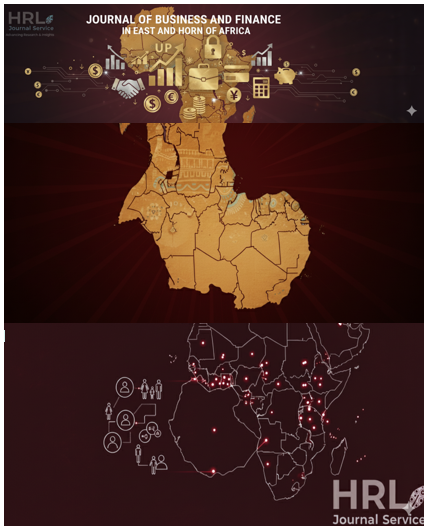Progressive Composite and Price-based marketing impact on Airtel Kenya Internet Data segment performance
Keywords:
Composite marketing, Price-based strategy, Internet data segment, Oligopolistic competition, Airtel Kenya Limited, Market adaptation, Telecom industryAbstract
This study examined the performance of a follower firm in an oligopolistic telecommunications market over a ten-year period (2014-2024). The study hypothesized that price-based and composite marketing strategies influenced the company’s data segment performance at 95% confidence interval. A case study research design cantered on Airtel Kenya Limited Plc was adopted. Secondary data on internet data services, subscriber trends, pricing strategies, and promotional efforts was collected for analysis. The findings revealed a strong positive relationship between progressive composite promotion, subscriber numbers, data usage, and data revenue, but a negative correlation with internet data pricing. Regression analyses further demonstrated that progressive composite promotional efforts explained monthly data subscription rates (R² = 0.8548, β = 1.34, SE = 0.175, p < .005), change in annual data revenue (R² = 0.8113, β = 1.34, SE = 3.31, p < .005), and monthly data usage (R² = 0.7885, β = 0.693, SE = 0.113, p < .005). On the other hand, average price per megabyte predicted regular internet subscriber numbers (R² = 0.4431, β = 3.11, SE = 1.10, p < .005), change in data revenue (R² = 0.7224, β = 0.61, SE = 0.1191, p < .005), and monthly data usage (R² = 0.6906, β = 0.897, SE = 0.1191, p < .005). These findings suggest that Airtel’s promotional strategies and outcomes align with penetration pricing and consumer behavior theories and generate valuable insights for Telecom providers navigating competitive landscapes in oligopolistic markets in which they occupy the position of followers.
Downloads
References
Ajayi, V. O. (2017). Primary sources of data and secondary sources of data. Benue State University, 1(1), 1-6.
Alduwailah, F. Y. (2018). Impact of CRM resources and capabilities on business performance in the mobile telecommunications industry: A resource-based view (Doctoral dissertation, Brunel University London).
Chumba, P. K. (2019). Influence of competitive strategies on firm performance in the telecommunication industry: A case study of Telkom Kenya in Nakuru East Sub County (Doctoral dissertation, KABARAK UNIVERSITY).
Cleophas, T. J., & Zwinderman, A. H. (2016). Logarithmic transformations, a great help to statistical analyses. In Clinical Data Analysis on a Pocket Calculator: Understanding the Scientific Methods of Statistical Reasoning and Hypothesis Testing (pp. 243-247). Cham: Springer International Publishing.
Cochran, K. T., Stegman, M., & Foos, C. (2021). Utility, telecommunications, and rental data in underwriting credit. Urban Institute, December.
Duc, D., & Duc, D. T. V. (2017). The Concentration and Competition of Vietnam Mobile Telecommunications Market Through HHI and Elasticity of Demand 2. VNU Journal of Science: Policy and Management Studies, 33(2).
Erbil, K. (2022). Penetration Pricing Strategy and Customer Retention–An Analysis. Journal of Positive School Psychology http://journalppw. com, 6(5), 7058-7072.
Gitonga, G. M., Kariuki, P., & Kimani, E. (2025). Market Penetration Strategies And Competitive Advantage Of The Telecommunication Firms In Kenya. International Journal Of Strategic Management, 4(1), 1-26.
Hancock, D. R., Algozzine, B., & Lim, J. H. (2021). Doing case study research: A practical guide for beginning researchers.
Mathenge, P. M. (2017). Effect of online marketing strategies on performance of telecommunication companies: A case of Safaricom Limited. International Academic Journal of Information Systems and Technology, 2(1), 49-60.
McIsaac, M., & Cook, R. J. (2017). Statistical methods for incomplete data: Some results on model misspecification. Statistical Methods in Medical Research, 26(1), 248-267.
Oliveira-Castro, J. M., Cavalcanti, P. R., & Foxall, G. R. (2015). What do consumers maximize?: The analysis of utility functions in light of the Behavioral Perspective Model. In The Routledge companion to consumer behavior analysis (pp. 202-212). Routledge.
Ongache, E. J. (2015). Competitive strategies adopted by Airtel Kenya for success in the telecommunications industry (Doctoral dissertation, University of Nairobi).
Oziri, S. T., Arowogbadamu, A. A. G., & Seyi-Lande, O. B. (2022). Predictive Modeling Applications Designing Usage and Retention Testbeds to Improve Campaign Effectiveness and Strengthen Telecom Customer Relationships.
Paetsch, M., Dorčák, P., Pollák, F., Štrba, Ľ., & Kršák, B. (2017). Developing a framework for future mobile data pricing. Quality innovation prosperity, 21(2), 84-108.
Ridder, H. G. (2017). The theory contribution of case study research designs. Business research, 10(2), 281-305.
Stapor, K. (2020). Descriptive and inferential statistics. In Introduction to probabilistic and statistical methods with examples in R (pp. 63-131). Cham: Springer International Publishing.
Wong, S. Y., Ong, L. Y., & Leow, M. C. (2024). AIDA-based customer segmentation with user journey analysis for Wi-Fi advertising system. IEEE Access.
Zakaria, A. F., Lim, S. C. J., & Aamir, M. (2024). A pricing optimization modelling for assisted decision making in telecommunication product-service bundling. International Journal of Information Management Data Insights, 4(1), 100212.
Downloads
Published
Issue
Section
License
Copyright (c) 2025 Jaosh Mbegera Moenga (Author)

This work is licensed under a Creative Commons Attribution 4.0 International License.

